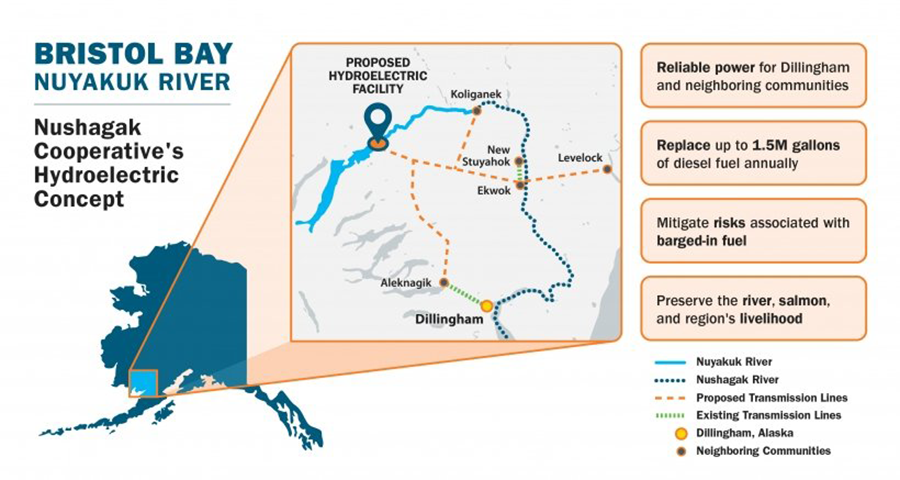Dillingham’s local utility, Nushagak Electric and Telephone Cooperative (NETC), placed clean, affordable, and reliable energy at the center of its community resilience goals.
Currently, the town runs on diesel, but with high fuel prices and growing concern about climate change, renewable energy is a priority for the cooperative that provides electricity, telephone, cable TV, and Internet services in Dillingham.
Energy Transition Initiative Partnership Project
To help Dillingham achieve its energy goals, NETC applied in 2021 for the U.S. Department of Energy’s Energy Transition Initiative Partnership Project and was selected for technical assistance in assessing the environmental and economic impacts of a potential run-of-river hydroelectric project.
Bob Himschoot, NETC’s CEO and managing director, said: “We’ve been involved in wind studies and looked at other options, such as natural gas conversion and solar, which are great for complementing other renewable energy sources.
But the data shows that hydropower is the golden ticket for Dillingham. This project could replace up to 1.5 million gallons of diesel annually while providing extra power to Dillingham and nearby towns year-round.
Geological features
After analyzing more than 60 years of U.S. Geological Survey flow data, NETC identified a location on the Nuyakuk River. That meets the ideal conditions for a low-impact, run-of-the-river hydropower project. The site is located about 100 km northeast of Dillingham, within the boundaries of Wood-Tikchik State Park.
The geological features of the site make it unique. Situated on a bend in the river, the chosen area is perfect for minimally diverting the river’s flow. In other words, this hydroelectric facility would not involve a dam. Instead, the potential hydroelectric project would use a diversion upstream of the bend to redirect some of the river’s flow. The water would pass through about 400 meters of pipeline. And reach a power plant where they would generate electricity, all on land. Once past the power plant, the water would return to the river downstream of the bend.
It can be of your interest: Advanced Manufacturing Production & Advanced Energy Project Investment Tax Credits: supporting clean energy manufacturing


